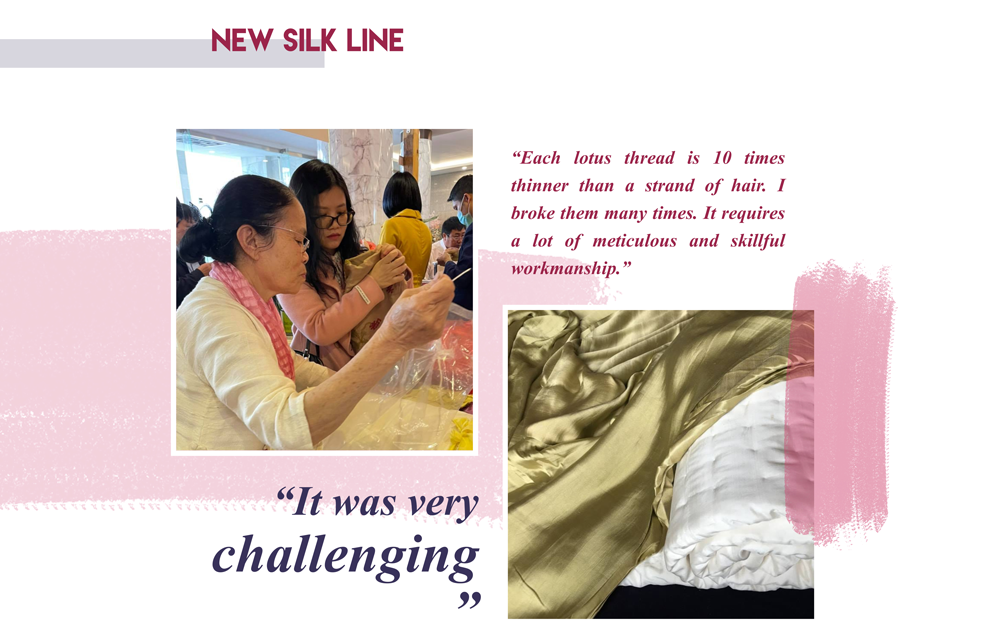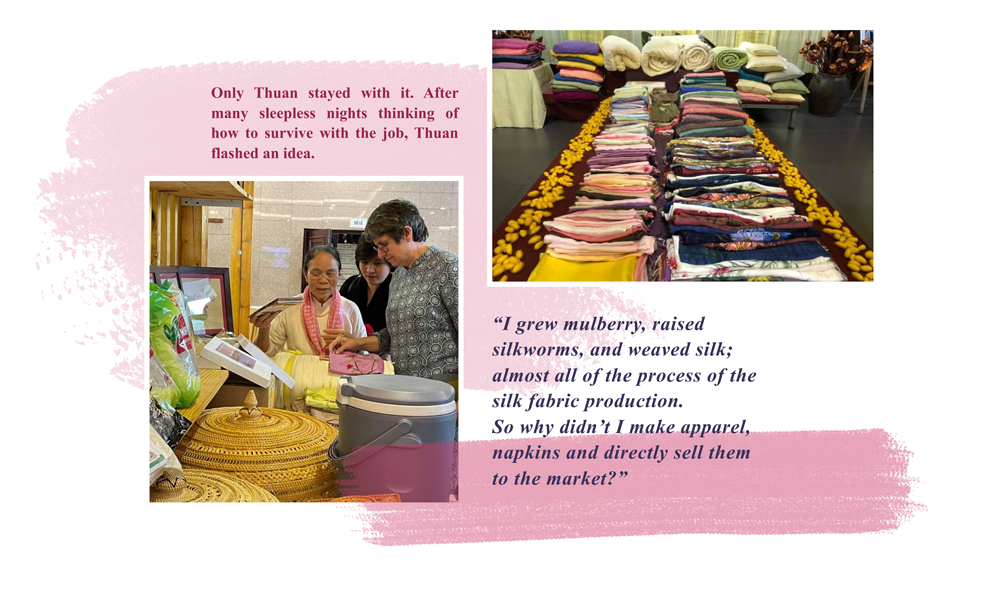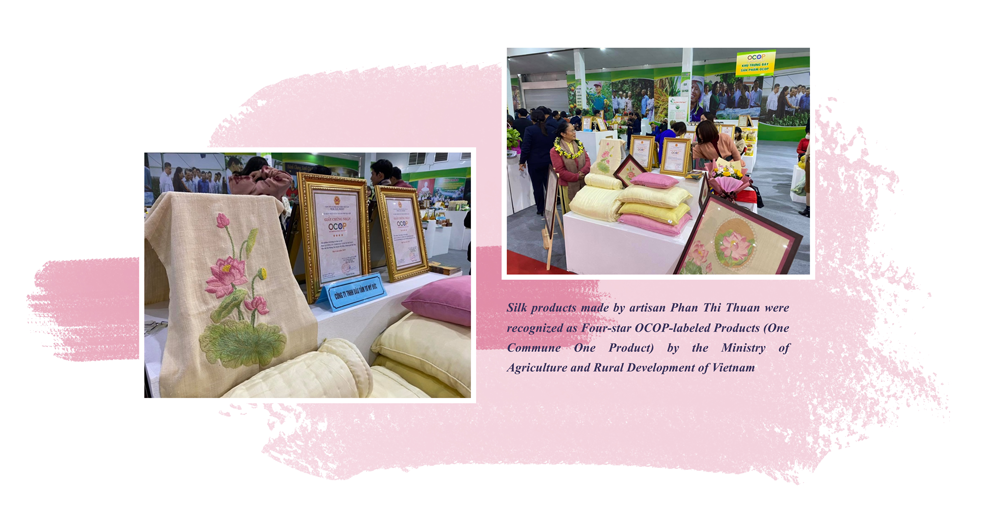Worm silk has been widely known around the world but lotus silk or lotus fiber silk is unique to Vietnam. Hanoi artisan Phan Thi Thuan has promoted the craft to a new level with her passion and creativity: weaving silk from lotus fiber.
The house, also the workshop of merit artisan Phan Thi Thuan in Phung Xa Commune, My Duc District, Hanoi, is always full of silk and the scent of lotus. “This is a lotus stalk, you have to use a knife to cut around it before twisting and pulling the fibers by your hands. It must be very careful because the fibers are very thin and fragile to break,” she explained with The Hanoi Times one of the most difficult parts of her work.
Thuan is the first artisan in the country to weave silk from lotus, making a new milestone for craft development. In fact, the road to her success wasn’t smooth.
It was very challenging,” Thuan recalled, “each lotus thread is 10 times thinner than a strand of hair. I broke them many times. It requires a lot of meticulous and skillful workmanship.”
Each lotus stem can produce one meter of thread and it needs about 4,800 threads to make a scarf, according to her.
Skilled workers can work on 200 stems a day so it takes about one month for it. “It takes a lot of work, effort, and time for a lotus silk product but it is worth it because it’s very smooth and especially pure, which no other type of silk can match,” she said.
In 2019, Thuan introduced unique lotus silk scarves, shirts, and dresses. This is regarded as a milestone for the silk weaving industry in the country, paving a new way for its development.
Since then, lotus silk has been known and favored throughout the country. Her lotus silk scarves were brought to the G20 summit by former Prime Minister Nguyen Xuan Phuc as gifts for international friends.
Before reaching this stage, Thuan went through the ups and downs of the craft, which also motivated her to preserve it with creativity. Her other impressive product is self-woven worm silk.
Thuan was born and raised in a family with the traditional trade of growing mulberry, breeding silkworms, and weaving silk for generations in Phung Xa Commune, where was regarded as the cradle of Hanoi’s weaving craft. Since five years old, she was taught the trade by her parents and has been attached to the weaving frame for over 60 years.
In the 1970s, her homeland was known as the “mulberry hub” of the North where most households made silk. Phung Xa silk was favored for its fine, smooth, and durable quality. But in 1984, the trade went down and artisans left the work.
Only Thuan stayed with it. After many sleepless nights thinking of how to survive with the job, Thuan flashed an idea. “I grew mulberry, raised silkworms, and weaved silk; almost all of the process of the silk fabric production. So why didn’t I make apparel, napkins and directly sell them to the market?” she told The Hanoi Times.
Noticing that silkworms release the silk to make a nest and then turn into cocoons, she put them together to release the silk cord on a flat surface. As a result, the silkworms released their knitting yarns, forming a flat cocoon that no human weaving technique can make.
The new technique also saved time and cost by reducing many complicated steps of production, contributing significantly to the development of traditional handicraft weaving.
In 2012, after many experiments, Thuan officially introduced the first-ever silk blanket woven by silkworms themselves. The product was awarded the Certificate of Merit by the Vietnam Farmer’s Union and won the first prize in the nationwide contest of creative farmers in 2015, organized by the union.
Thanks to the success of the silk blanket, she continued to introduce high-quality silk pillows and all were welcomed by local customers. Her products are also exported to many countries like Japan, China, Thailand, Belgium, and Germany, promoting Vietnamese craft products to the world.
Now Thuan is trying to create silk using a fusion of both silkworm and lotus for more affordable and sustainable products to meet the demand of the eco-friendly fashion market.














